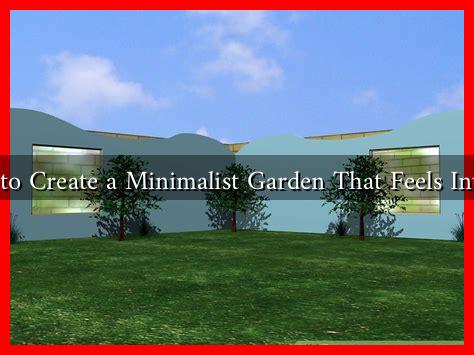-
Table of Contents
How to Create a Minimalist Garden That Feels Inviting
In an age where clutter often dominates our lives, the minimalist approach to gardening is gaining traction. A minimalist garden not only simplifies maintenance but also creates a serene environment that invites relaxation and reflection. This article will guide you through the essential steps to create a minimalist garden that feels inviting, focusing on design principles, plant selection, and practical tips.
Understanding Minimalism in Gardening
Minimalism in gardening is about stripping away the unnecessary and focusing on the essential elements that bring joy and tranquility. It emphasizes simplicity, functionality, and a connection to nature. According to a study by the American Society of Landscape Architects, gardens designed with minimalism in mind can reduce stress and enhance well-being, making them a perfect retreat from the chaos of daily life.
Key Principles of a Minimalist Garden
To create a minimalist garden that feels inviting, consider the following principles:
- Simplicity: Choose a limited number of plants and materials to create a cohesive look.
- Functionality: Design spaces that serve a purpose, whether for relaxation, dining, or gardening.
- Natural Elements: Incorporate natural materials like stone, wood, and gravel to enhance the organic feel.
- Negative Space: Use empty spaces strategically to allow the eye to rest and create a sense of openness.
Selecting the Right Plants
Choosing the right plants is crucial in achieving a minimalist garden. Here are some tips for plant selection:
- Opt for Foliage: Select plants with interesting foliage rather than relying solely on flowers. Varieties like Hostas, Ferns, and Ornamental Grasses can add texture without overwhelming the space.
- Limit Color Palette: Stick to a monochromatic or analogous color scheme to maintain a calm atmosphere. Shades of green, white, and gray can create a soothing environment.
- Incorporate Perennials: Perennials require less maintenance and can provide year-round interest. Consider plants like Lavender or Sedum for their resilience and beauty.
Designing Inviting Spaces
Creating inviting spaces within your minimalist garden is essential for fostering relaxation. Here are some design ideas:
- Seating Areas: Incorporate simple seating options like a wooden bench or a couple of lounge chairs. Position them to take advantage of views or sunlight.
- Pathways: Use gravel or stepping stones to create clear pathways that guide visitors through the garden. This not only adds structure but also encourages exploration.
- Water Features: A small pond or fountain can add tranquility and attract wildlife, enhancing the inviting atmosphere.
Maintenance Tips for a Minimalist Garden
Maintaining a minimalist garden should be straightforward. Here are some tips to keep your garden looking its best:
- Regular Pruning: Keep plants tidy and healthy by pruning them regularly. This helps maintain their shape and encourages growth.
- Mulching: Use mulch to suppress weeds and retain moisture, reducing the need for frequent watering.
- Seasonal Clean-Up: At the end of each season, remove dead plants and debris to keep the garden looking fresh.
Conclusion
Creating a minimalist garden that feels inviting is an achievable goal that can transform your outdoor space into a peaceful retreat. By focusing on simplicity, selecting the right plants, designing inviting spaces, and implementing easy maintenance practices, you can cultivate a garden that not only looks beautiful but also enhances your well-being. Remember, the essence of minimalism lies in creating a space that resonates with you, allowing you to connect with nature and find solace in your surroundings.
For more inspiration on minimalist gardening, consider visiting Gardenista, a resource dedicated to garden design and landscaping ideas.


